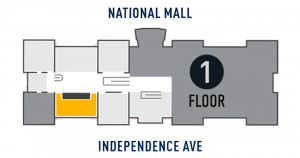In 1963, at age 32, Jerrie Cobb stunned family and friends by becoming a missionary in South America. For more than 50 years,the record-setting pilot and former corporate executive transported supplies and medicine to the people of the Amazon rainforest in Peru, Bolivia, Colombia, and Brazil. Cobb pioneered air routes and shared her faith.
Cobb slept in this cotton hammock that she tied to the wing of her plane. Indigenous people tied theirs to tree branches.
Many indigenous, isolated tribes in the world’s largest rainforest had died out
from lack of food and medicine. Cobb used the power of general aviation to reach and serve remote populations.
Display Status
This object is on display in Thomas W. Haas We All Fly at the National Air and Space Museum in Washington, DC.

Object Details
Type
PERSONAL EQUIPMENT
Pilot
Jerrie Cobb
Physical Description
Mulitcolored, woven cotton, fabric hammock with braided rope (nylon and cotton) attached for hanging purposes.
Dimensions
3-D: 280.7 × 127cm, 1.5kg (9 ft. 2 1/2 in. × 4 ft. 2 in., 3.2lb.)
Materials
Organic Fiber Fabric (Cotton)
Synthetic Fiber Fabric (Nylon)
Dyes
Inventory Number
A20200256000
Credit Line
Gift of the Warren Family
Data Source
National Air and Space Museum
Restrictions & Rights
Usage conditions apply
For more information, visit the Smithsonian’s Terms of Use.